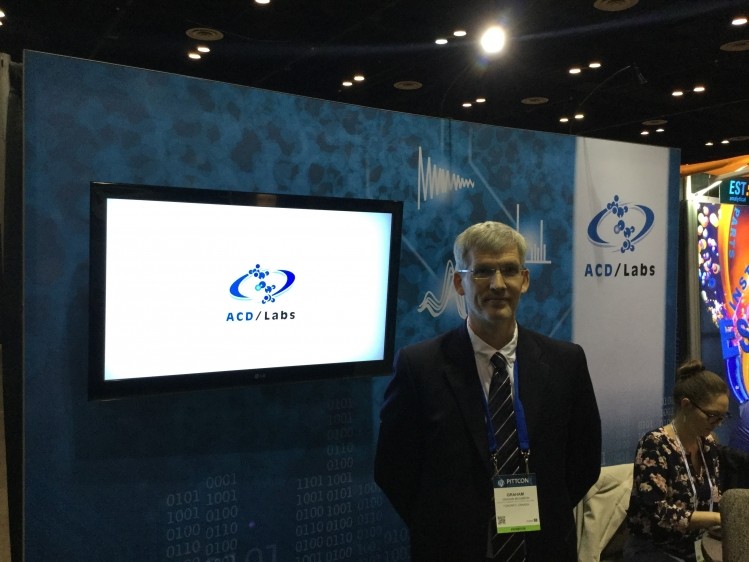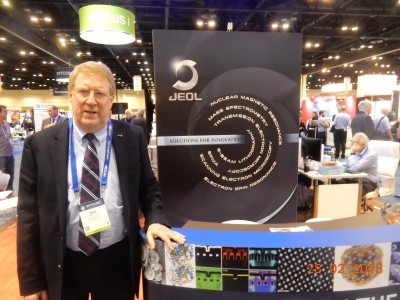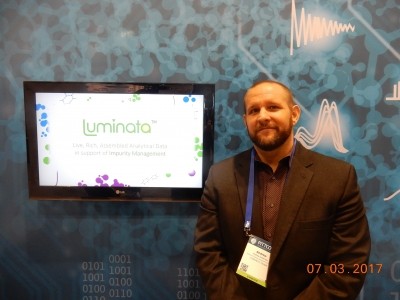Dispatches from Pittcon 2018 in Orlando
F&B looking for increased data integrity – ACD/Labs

Graham McGibbon, director of strategic partnerships, said people are moving to such systems to facilitate everyday work from traditional methods such as excel.
“It is an established way of doing things but the industry is always looking for new and more robust ways in terms of data integrity. Being able to put all the data into a single platform, I believe, will become the way of the future and we are seeing the early stages of that now,” he told FoodQualityNews at Pittcon.
Adoption to meet data integrity need
In industries like pharmaceutical and food and beverage best practices are adopted rapidly, said McGibbon.
“So if this provides a level of data integrity and line of sight for decisions that exceeds what’s going on with the data from instruments, transcribing to excel spreadsheets and having meetings and exchanging standard types of documents and facilitates communication better, then people will adopt it relatively quickly and I think we will see it over the next few years.
“The underlying technologies, because it is analytical data at the heart, are common between the [F&B industries] and we know that companies are closely related in what they do. They use the same kinds of equipment and have similar concerns in that toxic impurities are undesirable in food and beverages as much, or more so, than they are in medications.
“People have the same need to characterize impurities, it is generally just the level and differences in workflows and decisions in how they go about characterizing impurities.”
ACD/Labs has software to aid with looking at new components for product development, toxicity and degradation research and testing of food and beverages to ensure safety and shelf life.
It allows users to access experimental measurements from instruments and analytical techniques and apply interpretation algorithms to find an answer.
Informatics is used to address challenges in manufacturing such as synthetic steps in a chemical process; addition of ingredients; stirring or agitation and heating or chilling or formulation issues during consumer product production.
McGibbon said in impurities analysis people are usually looking for optimal methods of separation to make sure they identify all the possible impurities for the synthesis process.
“So they are doing a modest amount of chromatography in drug development, our primary marketplace,” he said.
“People are acquiring tens or hundreds of chromatography datasets as opposed to thousands or millions typically. The extra characterisation data is probably numbering in the 50s or 100s per study because the number of impurities is ideally low.
“There are classifications for impurities for pharmaceuticals, there are things relating to starting material by-products and residual solvents.
“There are a number of categories they can be classified into and the software lets you colour code the impurities if they fall into certain classes and that distinguishes them from the desired intermediates of a particular synthetic step and the API which will be the overall target of a synthetic process.”
Luminata update
ACD/Labs released a version of its ACD/Spectrus Platform with enhanced functionality and introduction to the Luminata impurity data management. We spoke to the company at Pittcon 2017 about the launch of the platform.
McGibbon said it is seeing uptake of Luminata by customers in the marketplace who are using the software to bring data and chemical structures together in the interface.
“Things which they always wanted to do, like tracking compounds across different process stages, something that they can see as soon as they’ve acquired the data and put it into the system, which was a lot of work before,” he said.
“In most cases people are acquiring LC-UV and LC-MS data to know the amounts of materials that are present with the impurities along with the API or intermediates they are trying to synthesize.
“They use the MS for identification initially by mass but when they find substantial amounts of impurities – there are levels specified by regulatory authorities – they need to identify or characterize some of those.
“They turn to high resolution accurate mass spectrometry and they can put those kind of spectral data or values into the system or NMR spectra – 1D or 2D NMR spectra and the underlying technology for Luminata allows you to handle that kind of analytical data.”
The chemistry part of the interface allows people to see process reactions and the various stages of synthesis from intermediate one, intermediate two all the way through to an API.
“All the impurities are listed within that interface as they are detected from the chromatography data. When you bring chromatography data you can see a chromatogram for certain wavelengths,” said McGibbon.
“Usually the total absorbance chromatogram from the UV detector and you can also see mass spectra and reference spectra for compounds if they are already characterised or available in the system.”


















